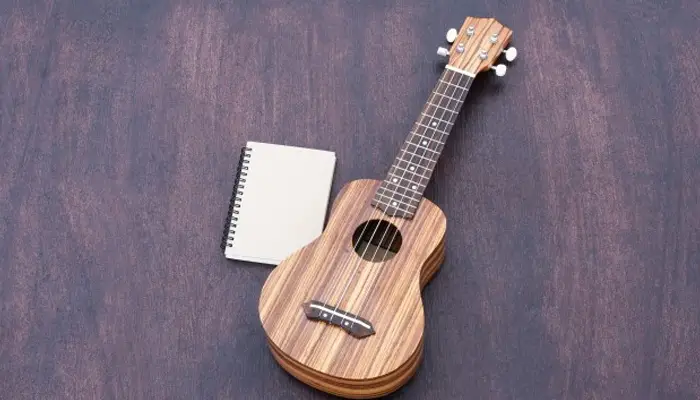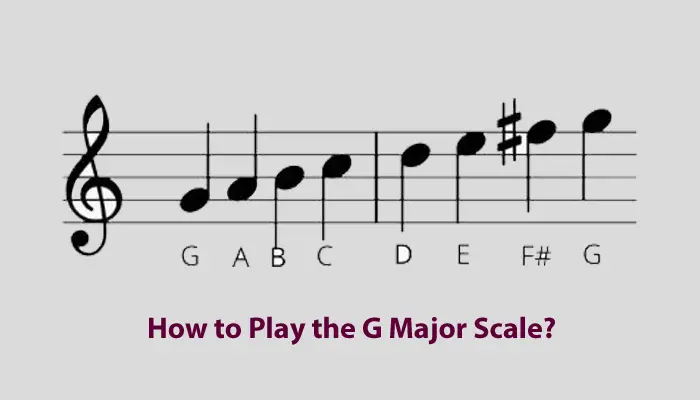
Do you know how to play the G major scale on your piano with excellent proficiency and skills?
It’s super easy to play and wouldn’t consume much of your time and energy to learn how to do so. Also, being a significant component of melodies, it will help you play loads of tones.
In this article, we’ll discuss the complete guide to help you learn how to play the G major scale on the piano in no time.
What Chords Are in the G Major Scale?
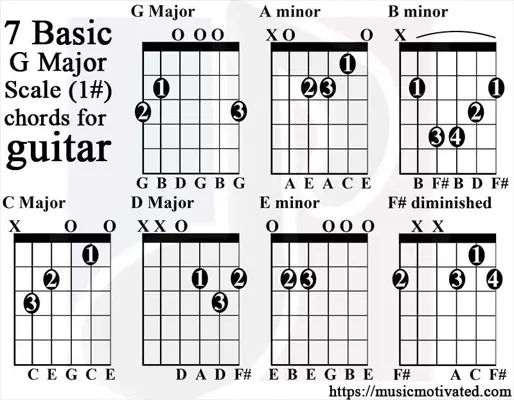
G major scale is the major scale on musical instruments, including guitar, piano, violin, flute, trumpet, trombone, clarinet, cello, and much more.
It uses seven major scale chords, each of which follows a particular pattern, enabling you to produce more rhythmic and pleasant tones efficiently.
These chords include G Major scale chord, A Minor scale chord, B Minor scale chord, C Minor scale chord, D Minor scale chord, E Minor scale chord, F# Diminished (F# dim) scale chord.
G Major scale chords
G Major scale chord is the main chord, represented by me. We usually denote it as Gmaj or Gmaj7 (G major seventh). The Gmaj has three notes, including G-B-D, while the Gmaj7 has four notes such that G-B-D-F#.
A Minor scale chords
A Minor scale chord has a roman numerical representation as ii. Thus, the lower case indicates it as a minor chord.
Moreover, it also includes A minor and A minor seventh chords, denoted as Am and Am7, respectively. The Am consists of three notes, including A-C-E, while the Am7 consists of four notes, including A-C-E-G.
B Minor scale chords
B Minor scale chords is another minor chord, represented by iii. It also includes B minor and B minor seventh chords, denoted as Bm and Bm7.
The Bm consists of B-D-F# notes while the Bm7 has one additional note such as A, making it B-D-F#-A.
C Major scale chords
C major scale chords have the numerical representation IV. It has two chords, C major (C) and C major seventh (Cmaj7).Its notes include C-E-G and C-E-G-B, respectively.
D major scale chords
D major scale chords include D major and D dominant seventh as well. They are denoted as Dmaj and D7. Moreover, they include D-F#-A and D-F#-A-C notes, respectively. This D major scale chord has the numerical representation as Chord V.
E minor scale chord
E minor scale chord or Chord vi also has two components: E minor and E minor seventh. The Em has three notes, such as E-G-B, while the Em7 consists of four, including E-G-B-D notes.
F# diminished scale chord
F# diminished scale is the unique one among the other seven scale chords. Its numeral representation is viio. It includes F# diminished and F# minor seventh flat five chords, represented as F#o and F#m7b5.
Moreover, F#o and F#m7b5 have F#-A-C and F#-A-C-E notes, respectively.
Playing the G Major Scale on Guitar
G major scale is pretty interesting yet a bit challenging. Playing it efficiently on guitar needs some practice. As you know, G major Scale has both major and minor scale chords.
The major chords are comparatively more straightforward and don’t require any extensive techniques for anybeginner.
Moreover, the best way to learn G major scale is to use guitar scale diagrams or the GPentatonicscale, which accurately represents the fretboard of any guitar.
G Major Scale Notes
G major scale noteshave seven notes. A, B, and E are the minor notes, while G, C, and D are major notes. The F# is the diminished one. They all are pretty excited to play.
Moreover, the minors are really easy, so starting with the minor notes will simplify your learning process.
G Major Scale Positions
To practice G major scale notes, get a printable scale diagram. This scale diagram has circled numbers representing a particular finger to use on your guitar while playing it.
It doesn’t matter if you use your right hand or left hand on the fretboard. All you need to do is just follow the patterns of your fingers.
Note that the numbers 1, 2, 3, and 4 indicate index finger, middle finger, ring finger, and little finger, respectively.
Open Position
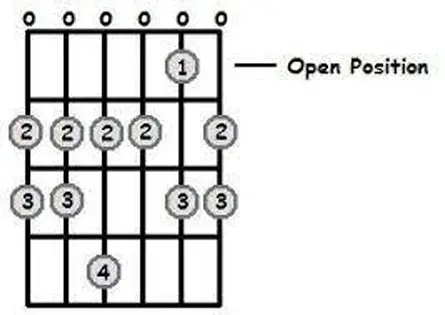
The open Position is pretty simple to play. All you need to do is use your fingers in the correct sequence. The sequence goes as index finger, middle finger, ringer finger, and little finger for first, second, third, and fourth frets.
2nd Position
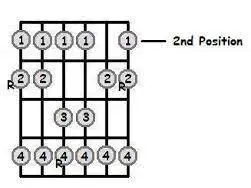
For the 2nd Position, the sequence is index finger for the second fret, middle finger for the third, and further on. The playing method is all similar, and you just need to remember the positions of your fingers.
5th Position
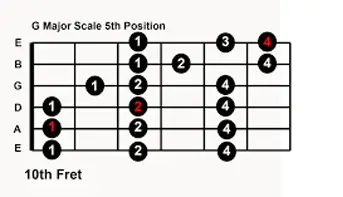
5th Position is a bit complicated, but practicing would help you a lot. Just remember, you need to place your index finger on the fourth fret, middle on the fifth, ring finger on the sixth, while your little finger on the seventh fret.
9th Position
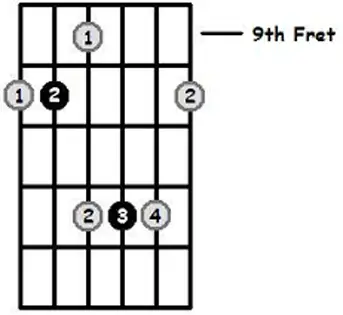
9th Position is a bit advanced, and you need to move your hands up and back while playing it. For this Position, the index finger needs to be placed on the 10th fret. The ring finger needs to be placed on the 11th and the little finger on the 12th and 13th.
12th Position
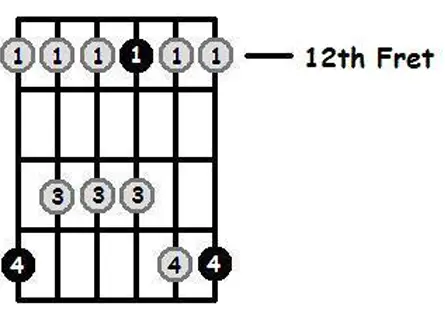
For the 12th Position, you need to place your index finger on the 11th and 12th fret while a middle finger on the 13th fret, ring finger on the 14th fret, and little finger on the 15th fret.
Like 9th Position, you need to move your hand continuously, which may be pretty uncomfortable for you.
G Major Scale Exercises
G major scale is pretty standard in the majority of the songs. To be skillful in playing, all you need to do is practice. Practicing each note with the correct Position may help you learn them in no time.
So, train your fingers by doing G major scale exercises and techniques on differentmusicfor complete expertise in it.
Final Words
We expect that this article will guide you on how to play the G Major scale efficiently shortly.
So, what are you waiting for? Follow this exclusive guide to learn about G Major Scale and its components.
You can also check out our guide on How to Play the Accordion and How to Play the F Major Scale.

